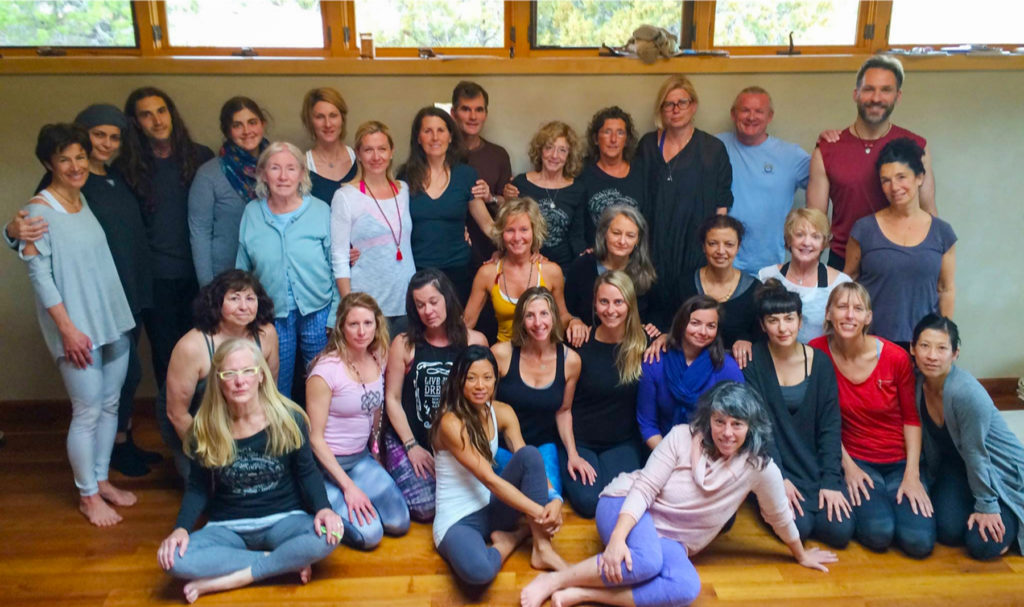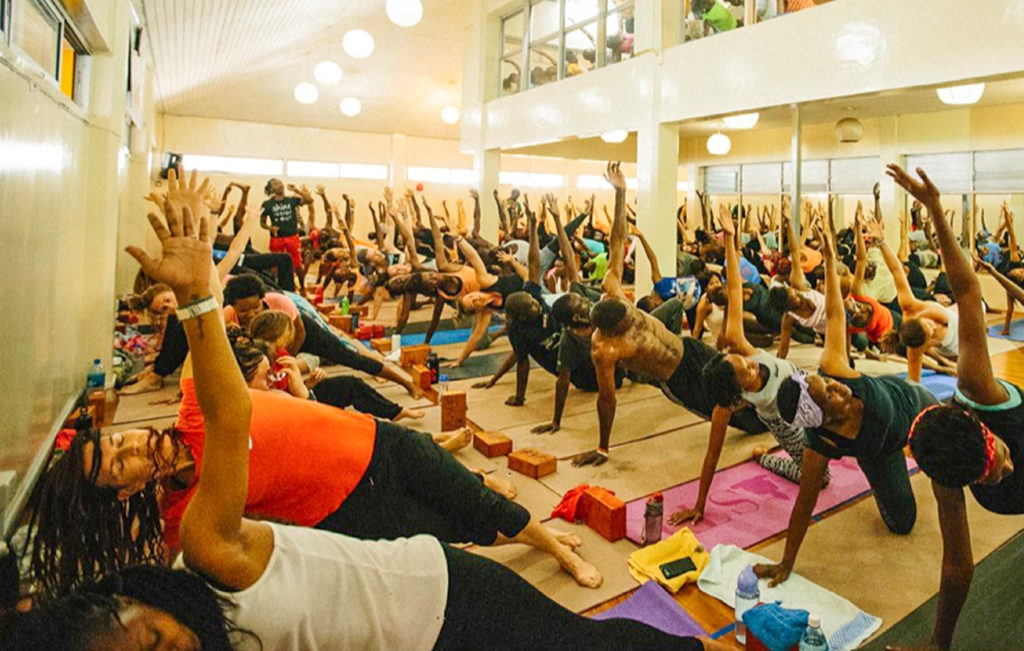
Research examines how practitioners’ race, nationality and gender intersect with empowerment and selfhood
A Mercer University professor’s own experiences with yoga led her to explore its impact on other practitioners.
For the past seven years, Dr. Natalie Bourdon, associate professor of anthropology and women’s and gender studies in the College of Liberal Arts and Sciences, has been researching the ways in which race, nationality and gender intersect with yoga practitioners’ experiences of empowerment and ideas of selfhood. Her work takes place in Santa Fe, New Mexico, and Nairobi, Kenya.
“One of the running narratives of yoga practitioners is that the practice provides a sense of liberation or empowerment. That’s what people gain from the practice,” she said. “And so, I was interested to see how those narratives and experiences that are global in nature are really experienced in quite different contexts.”
Dr. Bourdon chose Prajna Yoga in Santa Fe as one of her research sites because it’s the studio of her primary yoga teacher. She chose Africa Yoga Project in Nairobi as the second site because of her research background in East Africa and her ability to speak Swahili.
Among Dr. Bourdon’s research methods was autoethnography, in which she used her personal experiences as a source of data. Her experiences also informed the questions she asked other yoga practitioners.
“For example, if I had a certain experience in a yoga pose, I can use that experience to then ask other people if they’re also having a similar experience in their bodies,” she said. “Or, if we’re in a meditation practice, did similar types of imagery come up for them or memories from their past or emotional reactions in the body? I can use my own experiences to then ask others about theirs.”
This meant fully immersing herself in a 200-hour teacher training program in Santa Fe and participating in over 300 hours of yoga classes and meditation in Nairobi. In addition, she observed and interviewed participants at both sites.
The two sites were markedly different. The Santa Fe studio consisted primarily of white women, many of whom were middle-aged. They practiced Hatha yoga, which focuses on poses, breathing and mindfulness.

The Nairobi studio was made up mainly of Kenyan men from marginalized communities, which is, in part, a result of the Africa Yoga Project’s aims to train marginalized, at-risk youth to become yoga teachers. They practiced a faster style of yoga inspired by a well-known yoga instructor, Baron Baptiste.
“My question was: How are people in those two very different communities using the yoga practice for self-empowerment, as a liberatory practice?” Dr. Bourdon said.
In answering that question, she found many similarities between the two sites.
For instance, Dr. Bourdon found many people at both sites described their practice as a profound, physical experience. This makes sense, she said, as yoga is — in places outside of India — often first experienced as a physical practice.
“People were narrating that to put yourself on this mat for an hour a day, two hours a day or during teacher training programs, you have a radically different experience with your body than I think we are afforded in other spaces of our lives,” she said. “Being able to sit with yourself on your mat and really notice what’s going on in your body to really attend to it, see what patterns emerge — emotionally, physically, psychologically — that’s a really special opportunity that yoga gives us.”
Dr. Bourdon discovered that as participants became more attuned to their physical bodies, they started to pay more attention to their emotional and spiritual well-being. She discovered this in her own practice as well.
“A lot of people in both studios would talk about feeling stronger in themselves but not just physically, also emotionally, also spiritually,” she said. “It’s a practice that asks us to pose questions about our lives — how we behave; the habits we engage in; what we take into our bodies, physically, emotionally, spiritually; what we give out.”
That new understanding of themselves translates to how they behave with others, Dr. Bourdon said.
“You can get a really deep understanding of just how human we all are when you start having compassion for yourself and thinking about your childhood or your relationship with your parents or how you behave toward others, and then there’s somebody on the mat next to you, and you know that person’s also having that experience,” she said.

Gender issues came up for women in both studios, regardless of whether they were in Santa Fe or Nairobi, Dr. Bourdon said.
“A lot of women will talk about not realizing that they were as physically strong as they are, and they learned that through the practice,” she said.
They began to question the gender expectations of society and how they have been restricted by them, she said.
A person’s race may influence how they perceive yoga, as evidenced by the start of the Africa Yoga Project. A white woman began the practice over a decade ago, and initially Kenyans weren’t sure what to think about it, Dr. Bourdon said.
There is a large Indian community in Kenya, and because yoga originated in India, there were concerns about whether the practice was for them.
“There was a lot of consciousness around the racial performance of yoga that wasn’t ‘African men’s own practice’ — that they felt they were borrowing something that wasn’t culturally theirs and racially theirs but also religiously,” Dr. Bourdon said.
She was surprised to learn through interviews with people at the Africa Yoga Project that many were nervous to start because they were Christian and feared the practice was an attempt to convert them to Hinduism, even though the director of the organization wasn’t Hindu.
Dr. Bourdon is still working through her data and analysis on the role of race and nationality in yoga. But she did notice that in Santa Fe, people spoke of their practice in more individualized terms, whereas in Kenya the practice was more about community. That may be a reflection of the qualities of white culture, she said.
She hopes to eventually share her research, titled “Body Poetics and Body Politics: A Multi-Sited Sensory Ethnography of Yoga, Embodiment and Empowerment,” with the public. She envisions a book that also includes sensory content, such as images, sounds and exercises.
Dr. Bourdon began this project wanting to deepen her own practice and started teaching as a way of giving back. Before the pandemic, she taught at a yoga studio in Macon. She continues to train as a teacher in Santa Fe and is pursuing her 500-hour certification.










